Beam Projection
Since the first flashlight was patented in 1899, flashlights have used metallic reflectors to direct light in the desired direction. Since low cost has generally been a driving factor in manufacturing in the modern era, the use of flashlight reflectors has continued with little technological advancement for well over a century.
Capable of “bouncing” light, a reflector is limited in its ability to influence light distribution at closer ranges. When greater control over beam characteristics is required, an optical lens provides a better solution. By refracting (bending) light as well as reflecting it, a TIR (Total Internal Reflection) optical lens provides much more precise formation of beams. [Fig. 1 & 2] With an optical lens a flashlight can produce exacting beam profiles particularly tailored to specific, usually close range, missions.

Fig. 1.
All light is captured from the LED, reflected internally and directed forward.
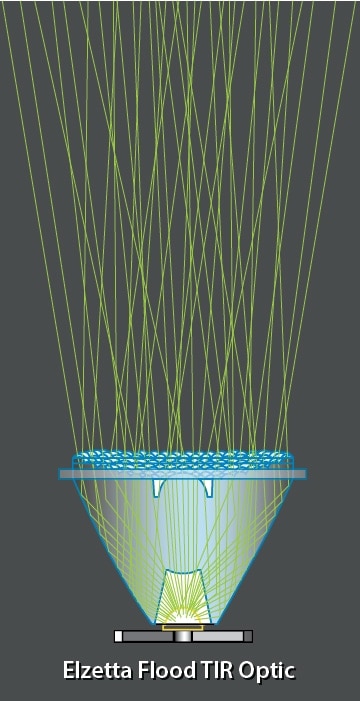
Fig. 2
Light from LED is controlled and scattered to create a Wall-of-Light
In the case of tactical flashlights, which are largely intended for use in close-quarters high-stress environments, optical lenses provide a significant advantage critical to operator safety and awareness. Unlike most reflectors, which produce beams with abrupt boundaries (a “hard-edge”), an optical lens can inherently produce a soft-edge beam where the intensity of the light gradually reduces away from the center, smoothly blending into the environment. [See Fig. 3 & 4] It is, however, possible to properly design a reflector with the right surface variations that can also create a soft edge to the beam as well as reflect and direct a beam of light into an exacting characteristic for a specific type of mission, but it can take some extra time, care, and skillful engineering.
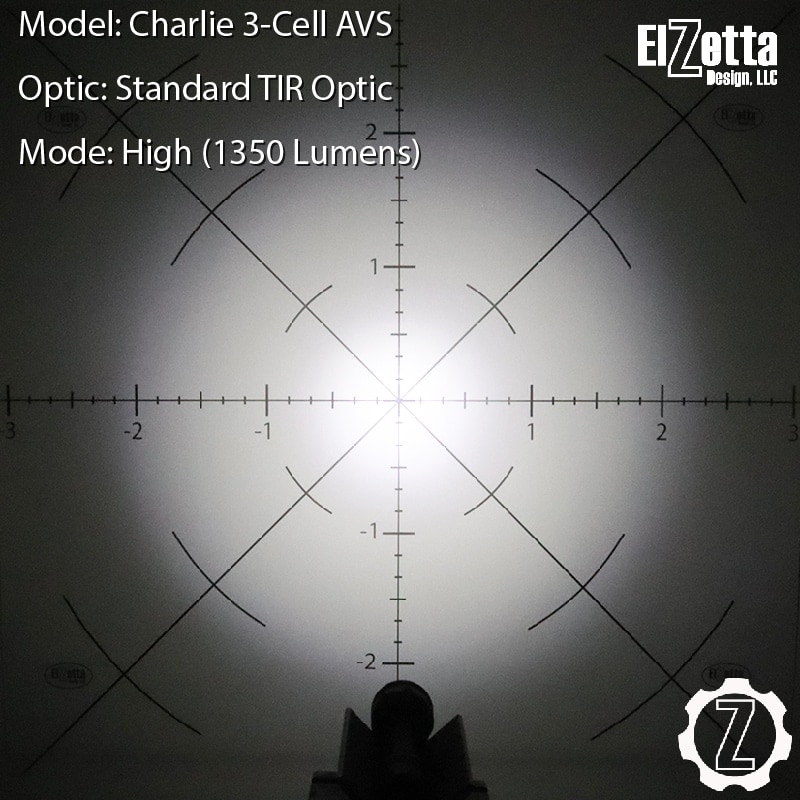
Fig. 3
Elzetta Standard TIR Optic Beamshot

Fig. 4
Elzetta Flood TIR Optic Beamshot
This difference in beam “edge” is of critical importance at close range, as humans, under high stress, experience a phenomenon commonly referred to as “Tunnel Vision”. Much has been written on how physiological Tunnel Vision dramatically reduces a person’s ability to discern threats in his environment. Reflector-based flashlights in a close quarters high-stress environment can compound this phenomenon (or create it artificially) by creating a literal tunnel of light. Threats outside the hard-edge of the light beam are not illuminated and thus not perceived, but at greater distances, the skillfully engineered reflector can produce the same soft edge and provide the same level of situational awareness for the operator.
A flashlight with a properly designed optical lens can generate a soft-edge beam providing more natural and beneficial illumination of peripheral threats or objects and does not compound the deleterious effects of Tunnel Vision in a close-range environment. The attached photos [Fig. 5 & 6], provided by FlashlightGuide.com, contrast the hard-edge beam produced by most reflectors and the soft-edge beam generated through an Elzetta field-replaceable optical lens.
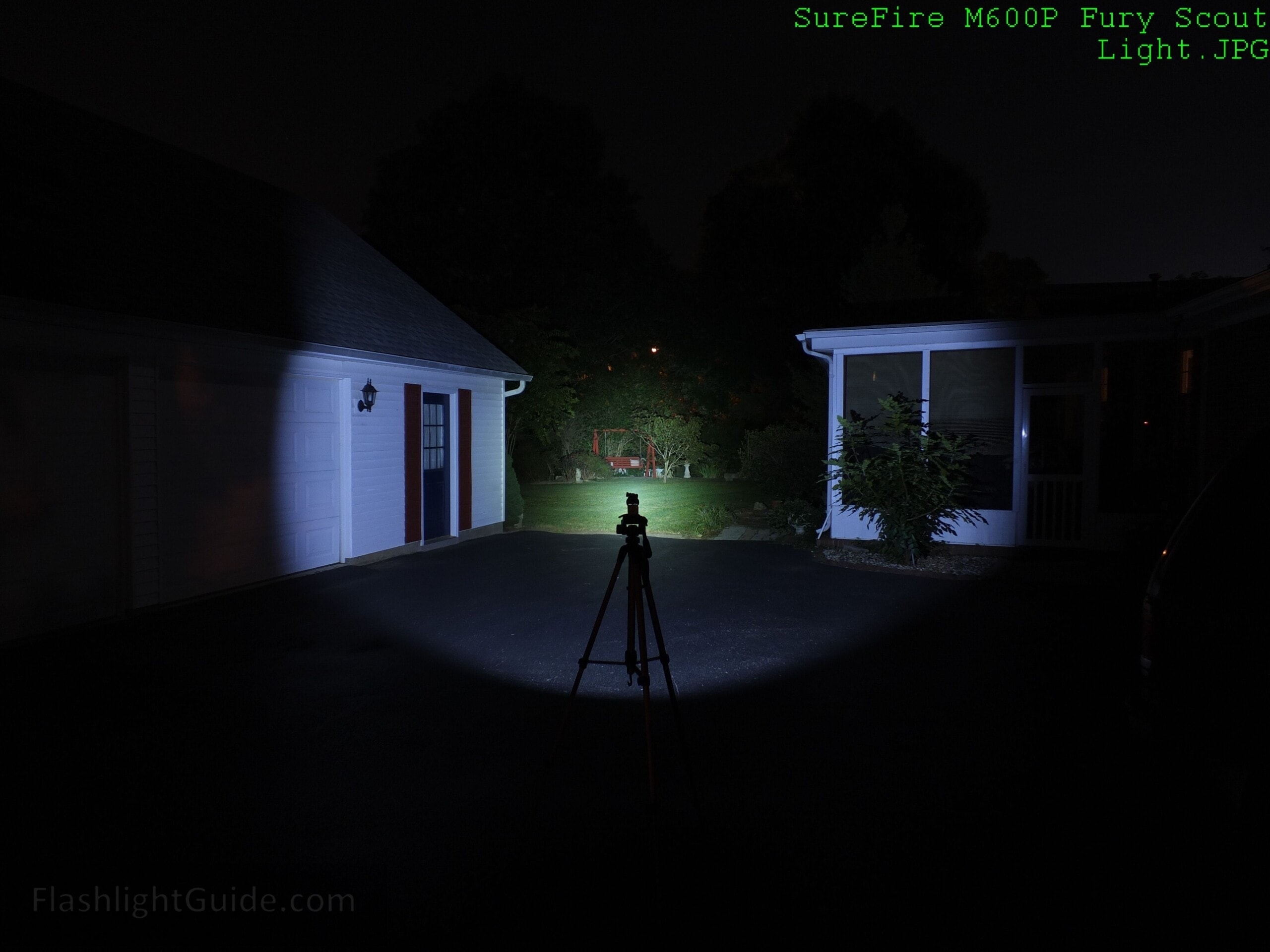
Fig. 5
600 Lumen Flashlight with Reflector Hard Edge Beam Pattern

Fig. 6
Elzetta 600 Lumen Bravo with Standard TIR Optic
Notice that the Elzetta Optical Lens [Fig. 6] illuminates much more of the immediate surroundings without cutting off at the edge of the beam, like the reflector does, but the reflector looks to be a bit more useful for illuminating the yard in the distance. [Fig. 5]
In addition to the visual benefits of optical lenses, they also provide significantly greater durability in close quarters when the threat of violent impact is prominent, which can be significantly more critical than when long range spotting. To seal against environmental contaminants, most reflector-based flashlights typically have a thin planar cover lens over the reflector. This cover lens is generally 2 mm thick (0.079”) or less and is clamped about its circumference over the reflector. Whether constructed of glass or polymer, these cover lenses are usually fragile and prone to fracture, the chances of which are much greater when in a close quarters battle situation. We have taken this cover lens fragility into account and have designed our cover lens for the Elzetta High Candela head to be twice as thick (4mm or 0.16”) as most common cover lenses, making it extremely durable, as well as being made from the same optical acrylic as our TIR optics.
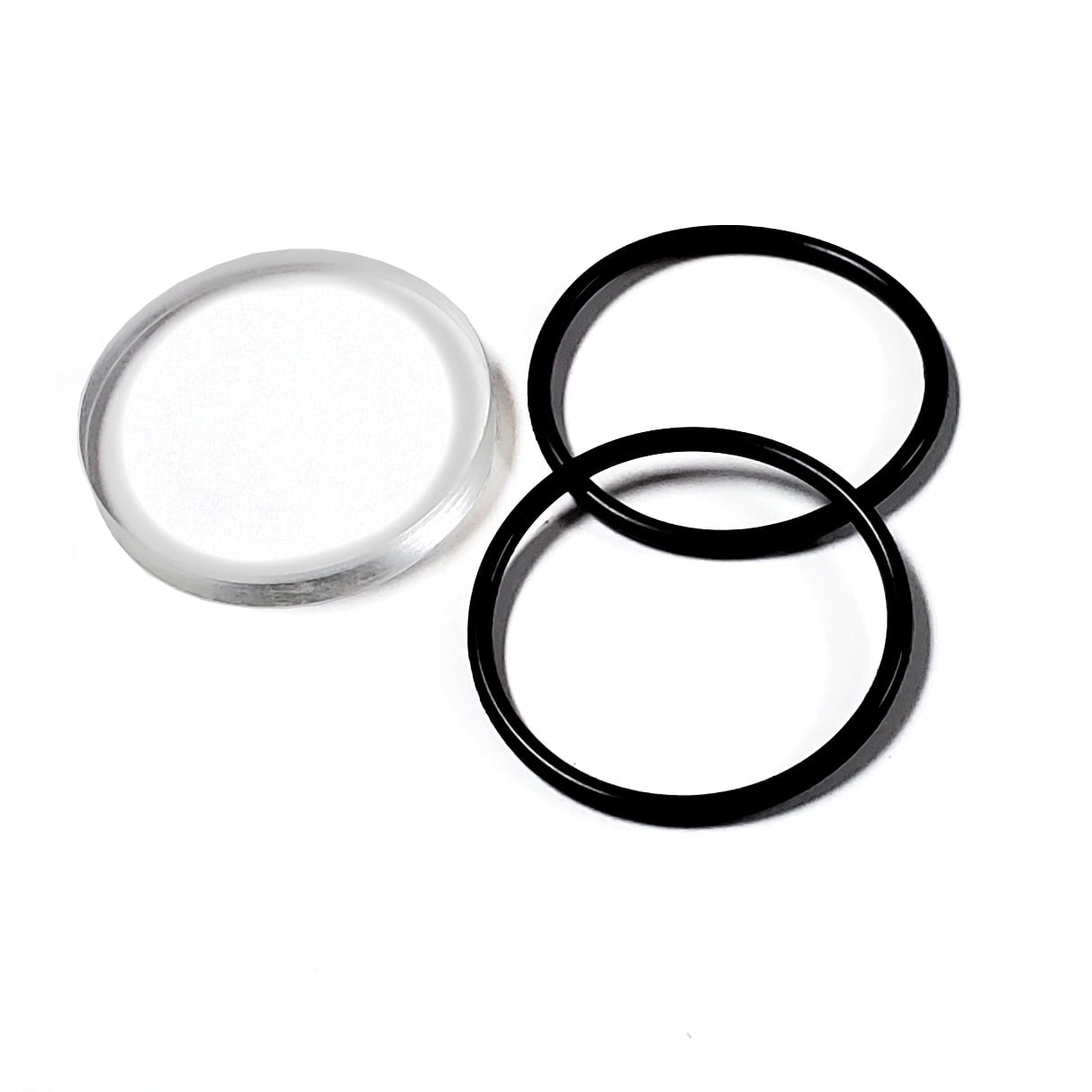
Fig. 7
HC Head Lens Cover Kit
An Elzetta Modular Flashlight with an optical lens has no need of a cover lens and uses the natural strength of its solid acrylic optical lens to provide an incredibly robust and durable assembly. Made from the same material as shark tanks, the optical lens can withstand extreme impacts including those incurred if the flashlight is used as an impact tool or weapon.
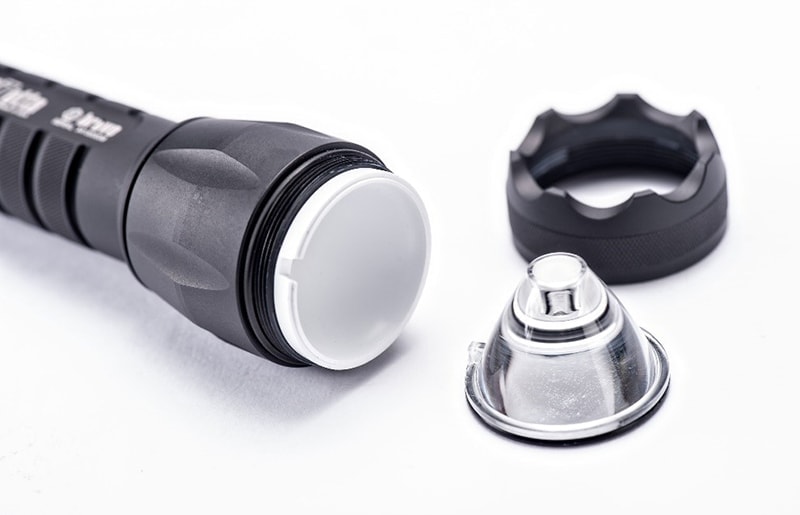
Fig. 8
AVS Standard TIR Lens Assembly
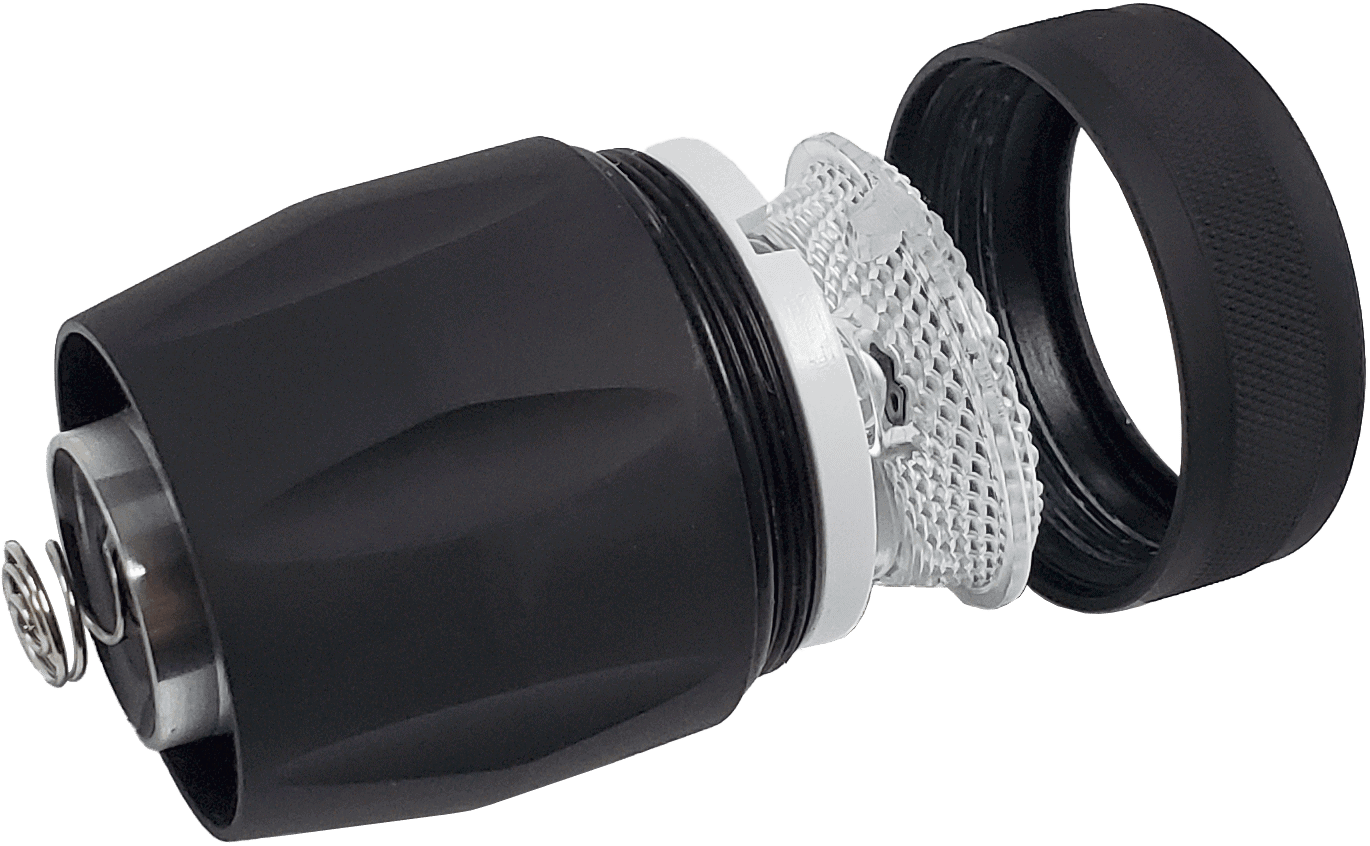
Fig. 9
AVS Flood TIR Lens Assembly
Given the advantages of optical lenses, one may wonder why most flashlights continue to be made with reflectors. The answer, in many cases, is that reflectors are less expensive to manufacture and don’t necessarily require as much investment to develop. Therefore, some manufacturers produce low-end flashlights with reflectors and better-quality models with optical lenses.
The truth is that there are proper uses for both TIR optics and reflectors. At Elzetta, we do not make low-end flashlights.
Every Flashlight we manufacture for close range use is equipped with an optical lens, and every flashlight designed for spotting or searching at longer distances is equipped with a specially engineered deep reflector and covered with a 4mm thick, extremely durable optical acrylic cover lens.
When a flashlight is used for stressful tight tactical applications, where one’s very life may be dependent upon the performance and durability of equipment, an optical lens should be demanded.
When a flashlight is needed for more remote security or surveillance spotting purposes, an Elzetta designed deep reflector-based high candela model is the proper solution.

Fig. 10
Elzetta HC Head Beamshot
